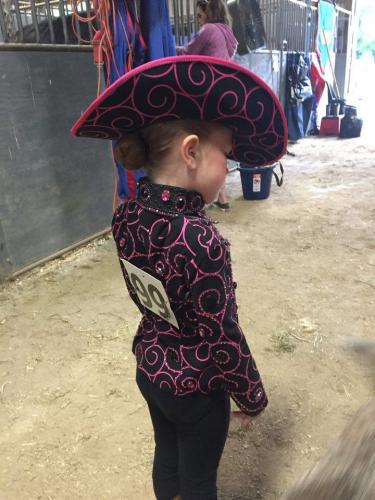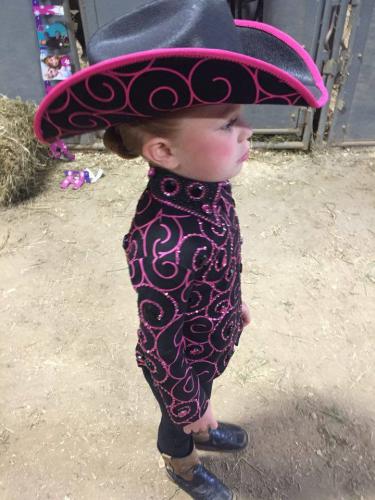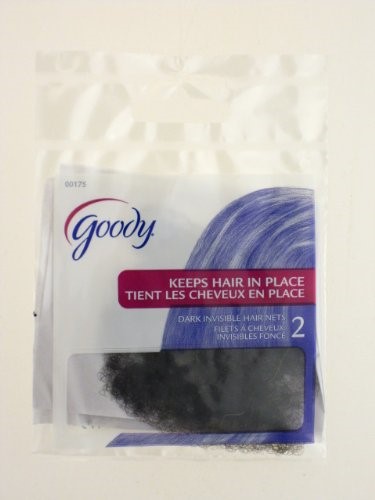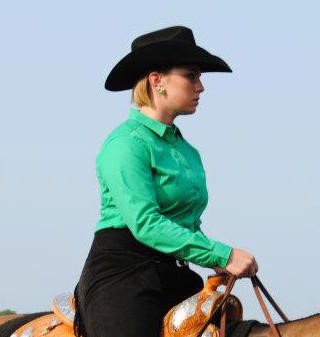Horse show hair: western showmanship and horsemanship
Look your best for your next exhibition with these tips for the perfect horse show hair!

You wouldn’t think that horse show hair would be a sensitive or controversial topic, but bring it up on social media and you’ll soon learn otherwise. It would appear, like many popular topics these days, everyone has their own opinion. It would also appear, based on what I’ve seen in show arenas across the state, that this is an area with room for improvement and consistency. This Michigan State University Extension article is intended to provide coaches, leaders and showmen with a resource for improving this area of their horse show turnout.
You may be wondering, why in the world is this an important topic? Aren’t judges more concerned with the horse and rider’s ability, not their hair? Well you absolutely have reason to pause, and you’d be correct; horse show hair is a priority that finds itself near the bottom of a list of things the judge is considering when evaluating riders in a competitive setting. However, a poor first impression is often attributed to minute details, such as hair.
I’m a firm believer in looking the part whenever possible, especially when it takes little to no monetary investment to do so. My horse and I will try to impress the judges with our abilities in the show arena and the last thing I want is something trivial to take away from that overall picture. As I’ve said many times to exhibitors: let’s fix all the easy, free things we can. The more difficult, challenging and expensive fixes may come with time.
Here we’ll discuss the ideal horse show hair for western showmanship and horsemanship. Although this look can be attractive in many other classes, there are some preferences based on breed of horse and discipline of riding. Primarily, the purpose of the rider’s hair at any horse show is to simply stay out of the way and compliment the overall look of the rider; it really shouldn’t be an area that brings a lot of attention to it. A showman should do their best to minimize loose or fly away hairs and this is something that must be attended to throughout a day of showing if you’re trying to keep your hair looking nice. As a result, I prefer the hair be pulled into a tight bun.


How a nice bun will look with a western hat.
To help showman perfect a successful bun, the following tips can be helpful:
- The usefulness of hair spray cannot be overemphasized. When the goal is to keep hair where you put it, hair spray can help accomplish this task.
- Freshly-washed hair tends to be more difficult to manipulate into a bun. Spraying the ponytail with some hairspray or back-combing slightly can help make freshly-washed hair more user-friendly.
- Pulling the top half of your hair up into a half ponytail first will help keep fly away hairs more secure throughout the day – especially those around the face. If you have thick hair, pulling it half up before pulling it into a ponytail will also help reduce the size of your bun.
- Hair should be pulled back into a tight, low ponytail. This should sit very low on the head, at the nape of the neck. Positioning the bun here will prevent it from interfering with your hat or helmet later.
-
At this point, my preference is to twist the ponytail so it becomes one long twist. I then take the twisted ponytail and wrap it around the hair tie that I used to secure the ponytail. By adding a few bobby pins, you can partially fasten the round, flat, tight bun into place.
 The next step, which will take your bun from messy and unsecure to neat and tidy, is to grab an invisible hair net and wrap it around the bun several times. These hair nets can be easily found near the hair accessories section at stores such as Walmart, Meijer or Walgreens and cost approximately $1.50 for two. Hair nets allow any loose, layered hair to lay neatly and form the completed bun. Use a few bobby pins to secure the hair net to the bun. Personally, I like to push the bun tightly to the head using the palm of my hand while placing the bobby pins. This helps to tighten and flatten the bun to the head, helping it remain secure for a longer period of time.
The next step, which will take your bun from messy and unsecure to neat and tidy, is to grab an invisible hair net and wrap it around the bun several times. These hair nets can be easily found near the hair accessories section at stores such as Walmart, Meijer or Walgreens and cost approximately $1.50 for two. Hair nets allow any loose, layered hair to lay neatly and form the completed bun. Use a few bobby pins to secure the hair net to the bun. Personally, I like to push the bun tightly to the head using the palm of my hand while placing the bobby pins. This helps to tighten and flatten the bun to the head, helping it remain secure for a longer period of time.- Some exhibitors choose to add a small pop of color to a finished bun: this is fine. Using ribbon that compliments your outfit, you can tie a small bow to a bobby pin and place the bobby pin into the bun. The bow should lay flat against the top of the bun and should not move or flap when the rider is moving.
Think you can’t achieve the tight bun look? Here’s a few ways to trouble shoot your issue and still achieve an excellent result.
- Hair that is too short for a bun. If the hair is long enough to be pulled into even a tiny ponytail, it is long enough to achieve the bun look. This can easily be done by purchasing a clip-in bun to secure over your ponytail. These can be found at beauty supply stores or online and cost less than $10. In addition, they may be easier than manipulating your own hair into a bun since most of the work is a
- lready done for you!
- Hair that is too short for a ponytail. No worries, I showed with a very short bob for years. Just be sure to pull back the top half, as to avoid long fly away hairs (these tend to become unruly with long, sweaty horse show days). An invisible hair net can also be secured over your bob to tame your hair.
- Hair that is too long or too thick. I have seen ladies with extra long or thick hair secure a portion of their hair into a flat bun on top of their head. If that’s unsuccessful, just keep the hair pulled back as best you can, perhaps in a nice, tight braid. However, be sure the braid isn’t covering your back number at all.

An example of nicely-kept short hair in horsemanship.
Looking for more examples? Each of these examples use a slightly different technique than described above but both achieve fantastic results. Try them all to see what works best for you!
- Video: Horse Show Hair Bun Tutorial. This method is great for those with fine or thin hair.
- Article: Show-Day Do from Horse & Rider Magazine



 Print
Print Email
Email



